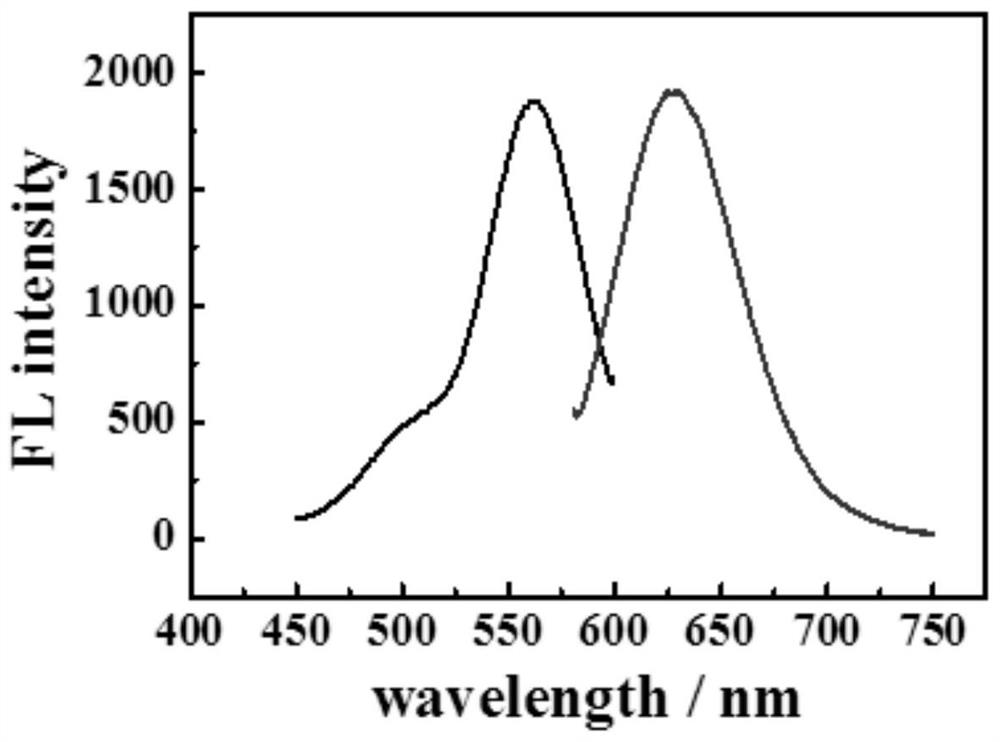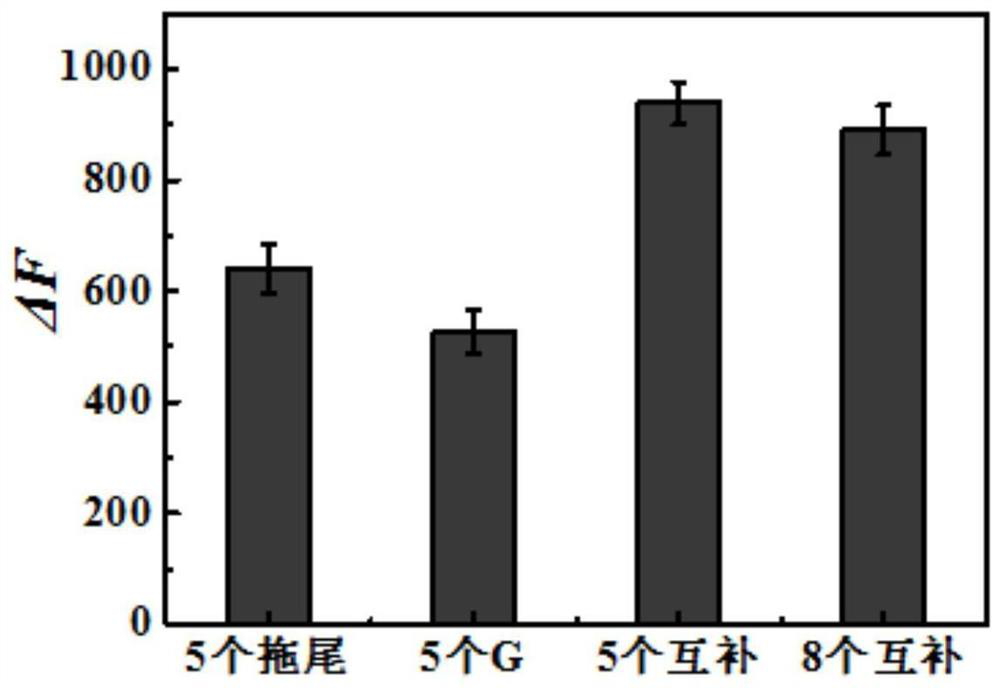A dsDNA-agncs fluorescent probe for HER2 detection and its construction method and application
A fluorescent probe and a construction method technology are applied to a dsDNA-AgNCs fluorescent probe for HER2 detection and its construction and application fields, which can solve the problems of limited wide application, high price and the like, and achieve improved sensitivity, simple operation, Small size effect
- Summary
- Abstract
- Description
- Claims
- Application Information
AI Technical Summary
Problems solved by technology
Method used
Image
Examples
Embodiment 1
[0037] The preparation method of silver nanocluster, the steps are as follows:
[0038] Take 40 μL of DNA1 (50 μM) and 40 μL of DNA2 (50 μM), and add 240 μL of phosphate buffer (20 mM, pH 7.0) to mix well, detwirl at high temperature and then cool to room temperature for hybridization and complementation. Add 12 μL AgNO 3 Shake and mix the aqueous solution (1mM) at room temperature for 15min, then add 12μL of freshly prepared NaBH 4 (1mM) mixed quickly and transferred to a constant temperature water bath at 25°C to react for 2 hours, then its fluorescence can be detected. The sequence number of DNA1 is: 5'-GG GGT GTG GCG ACG-3'. The sequence number of DNA2 is: 5'-ATATT ACCC CAA CCCC CGT CGC CAC ACCCC GGGG AAG GGGT AAT AT-3'.
PUM
 Login to View More
Login to View More Abstract
Description
Claims
Application Information
 Login to View More
Login to View More - R&D
- Intellectual Property
- Life Sciences
- Materials
- Tech Scout
- Unparalleled Data Quality
- Higher Quality Content
- 60% Fewer Hallucinations
Browse by: Latest US Patents, China's latest patents, Technical Efficacy Thesaurus, Application Domain, Technology Topic, Popular Technical Reports.
© 2025 PatSnap. All rights reserved.Legal|Privacy policy|Modern Slavery Act Transparency Statement|Sitemap|About US| Contact US: help@patsnap.com



